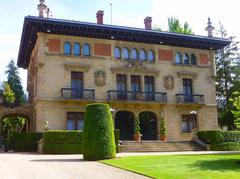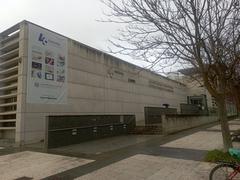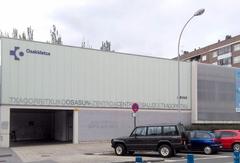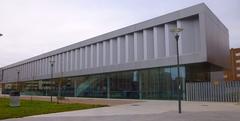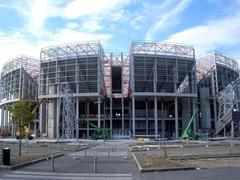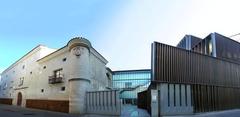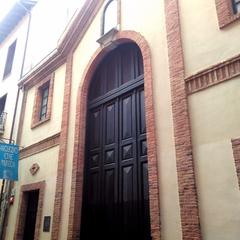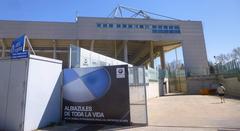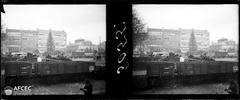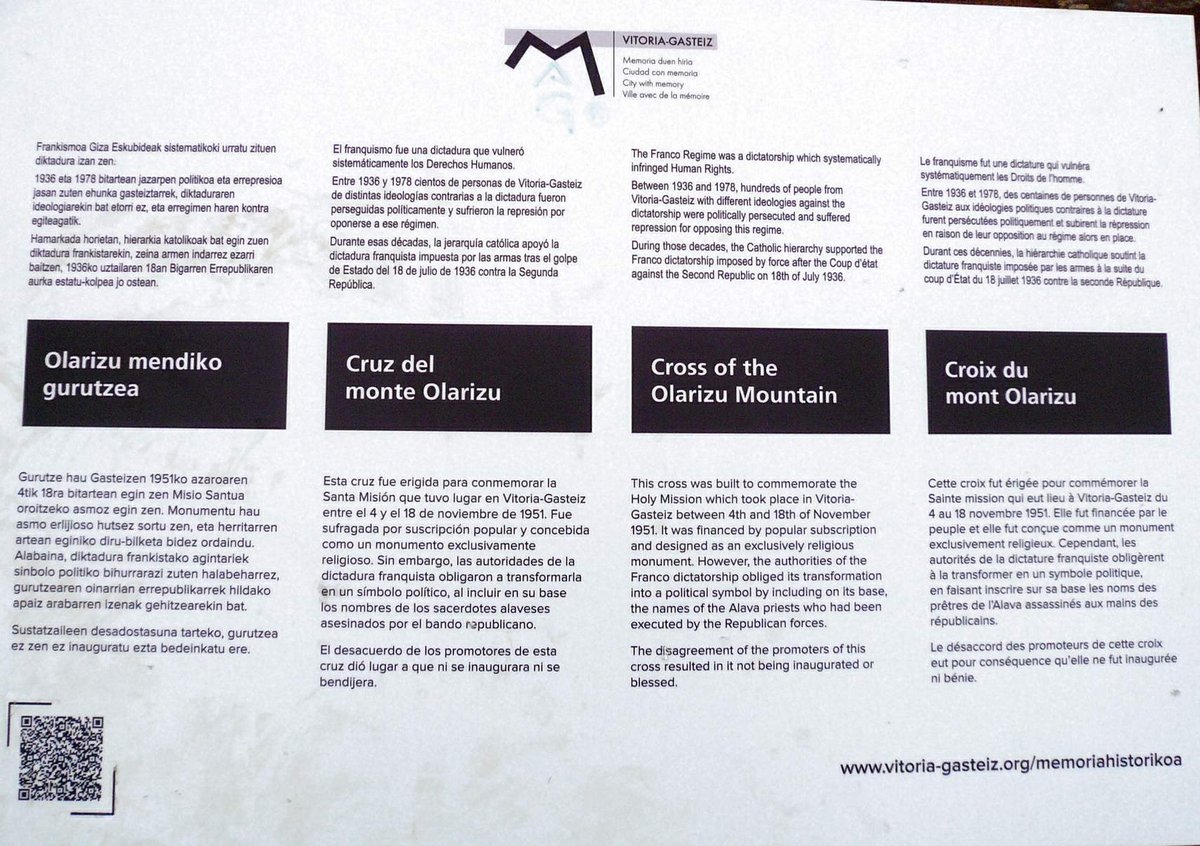
Visiting Vitoria-Gasteiz: Key Information and Travel Tips
Date: 20/07/2024
Introduction
Vitoria-Gasteiz, the capital of the Basque Country in northern Spain, is a city that offers an enchanting blend of historical allure and contemporary vibrancy. Founded in 1181 by King Sancho VI of Navarre and originally named ‘Nueva Victoria,’ Vitoria-Gasteiz has grown from a medieval military outpost into a cultural and historical epicenter (Basque Country Tourism). This city is not just a gateway to the rich history of the Basque Country but also a testament to its modern achievements in sustainability and urban development. From the narrow medieval streets of the Casco Viejo to the sprawling green spaces of its renowned Green Belt, Vitoria-Gasteiz presents a myriad of experiences for every traveler. The city’s commitment to preserving its heritage while embracing modernity is evident in its well-preserved Gothic architecture, such as the Cathedral of Santa María, and its contemporary cultural institutions like the Artium Museum (Cathedral of Santa María, Artium Museum). Whether you are drawn by the historical significance, cultural richness, or the allure of Basque gastronomy, Vitoria-Gasteiz promises a memorable journey. This comprehensive guide aims to provide you with all the essential information, from the best times to visit and key attractions to practical travel tips and cultural etiquette, ensuring you make the most of your visit to this captivating city.
Table of Contents
- Introduction
- History of Vitoria-Gasteiz
- Cultural Significance
- Visitor Information
- Nearby Attractions
- Special Events and Tours
- Shopping
- Day Trips
- Local Events and Festivals
- Language and Communication
- Conclusion
- FAQ
History of Vitoria-Gasteiz
Early Beginnings and Medieval Era
Vitoria-Gasteiz, the capital of the Basque Country in Spain, has a rich history that dates back to the early Middle Ages. The city was founded in 1181 by King Sancho VI of Navarre, who named it ‘Nueva Victoria.’ Over the centuries, it evolved into a vibrant center of culture and history.
Medieval Prosperity
During the Middle Ages, Vitoria-Gasteiz flourished as a commercial hub. The city’s layout, characterized by narrow streets and medieval walls, reflects its historical significance. The Old Town, known as ‘Casco Viejo,’ is a testament to its medieval prosperity, with landmarks such as the Cathedral of Santa María, which began construction in the 13th century (Cathedral of Santa María).
Modern Development
In the 19th and 20th centuries, Vitoria-Gasteiz underwent significant urban development. The city expanded beyond its medieval walls, incorporating modern infrastructure while preserving its historical heritage. This blend of old and new is evident in the city’s architecture and urban planning (Vitoria-Gasteiz City Council).
Cultural Significance
Basque Identity
Vitoria-Gasteiz is a cultural epicenter of the Basque Country, embodying the region’s unique identity. The Basque language, Euskara, is widely spoken, and the city hosts numerous cultural events celebrating Basque traditions, such as the annual ‘La Blanca’ festival in August (La Blanca Festival).
Art and Music
The city is renowned for its vibrant arts scene. The Artium Museum, a contemporary art museum, showcases works by Basque and international artists. Additionally, the annual Vitoria-Gasteiz Jazz Festival attracts world-class musicians and jazz enthusiasts from around the globe (Artium Museum, Vitoria-Gasteiz Jazz Festival).
Gastronomy
Vitoria-Gasteiz is a gastronomic haven, offering a blend of traditional Basque cuisine and modern culinary innovations. The city’s pintxo bars are famous for their small, flavorful dishes, and local markets like the Mercado de Abastos provide fresh, regional produce (Mercado de Abastos).
Visitor Information
Visiting Hours and Ticket Prices
- Opening Hours: Most historical sites in Vitoria-Gasteiz are open from 10 AM to 6 PM.
- Ticket Prices: Entry fees vary by location, with most sites charging between €5 to €15.
Travel Tips
- Best Time to Visit: Spring and autumn are ideal for pleasant weather and fewer crowds.
- Transportation: The city is well-connected by public transport, including buses and trams.
Accommodation
Vitoria-Gasteiz offers a range of accommodation options, from luxury hotels to budget-friendly hostels. Staying in the Old Town provides easy access to historical sites, while modern hotels in newer parts of the city offer more amenities (Accommodation in Vitoria-Gasteiz).
Local Etiquette
Understanding local customs can enhance your visit. Basques are known for their hospitality, but it’s important to respect their traditions. Learning a few basic phrases in Euskara can go a long way in making a positive impression (Basque Language Basics).
Safety Tips
Vitoria-Gasteiz is considered a safe city for tourists. However, as with any travel destination, it’s important to stay vigilant, especially in crowded areas and tourist hotspots (Safety in Vitoria-Gasteiz).
Emergency Contacts
In case of emergencies, the general emergency number in Spain is 112. It’s useful to have this number saved in your phone and to know the location of the nearest hospital or medical center (Emergency Numbers in Spain).
Nearby Attractions
Cathedral of Santa María
The Cathedral of Santa María is a must-visit landmark. This Gothic cathedral, undergoing continuous restoration, offers guided tours that provide insights into its architectural evolution and historical significance. Visiting hours are typically from 10 AM to 2 PM and 4 PM to 7 PM; tickets can be purchased on-site or online (Cathedral of Santa María).
Plaza de la Virgen Blanca
The Plaza de la Virgen Blanca is the heart of Vitoria-Gasteiz. This historic square is surrounded by charming buildings and is a popular gathering spot for locals and tourists alike. It’s also the focal point of the ‘La Blanca’ festival (Plaza de la Virgen Blanca).
Artium Museum
The Artium Museum is a contemporary art museum that houses an impressive collection of modern art. It’s an essential stop for art enthusiasts, offering exhibitions, workshops, and cultural activities. The museum is open from 11 AM to 8 PM, and tickets are available online or at the entrance (Artium Museum).
Green Belt
Vitoria-Gasteiz is known for its commitment to sustainability, exemplified by its Green Belt. This network of parks and green spaces encircles the city, providing recreational areas and promoting biodiversity. There are no admission fees, and the parks are open year-round (Green Belt).
Museo de Bellas Artes
The Museo de Bellas Artes, housed in a beautiful early 20th-century mansion, features a collection of Spanish and Basque art from the 18th to the 20th centuries. It’s a serene place to appreciate classical art. The museum is open from 10 AM to 2 PM and 4 PM to 6 PM, with tickets available at the door (Museo de Bellas Artes).
Special Events and Tours
Guided Tours
Guided tours are available in multiple languages, offering a deep dive into the city’s history. These tours can be booked online or at the tourist office (Guided Tours in Vitoria-Gasteiz).
Festivals
Vitoria-Gasteiz hosts several annual festivals, including the famous Vitoria-Gasteiz Jazz Festival and the vibrant Fiestas de la Virgen Blanca (Vitoria-Gasteiz Jazz Festival, Fiestas de la Virgen Blanca).
Shopping
Mercado de Abastos
The Mercado de Abastos is a must-visit for fresh produce, local cheeses, and cured meats. This market is a favorite among locals and tourists alike (Mercado de Abastos).
El Boulevard Shopping Center
For fashion and accessories, head to the El Boulevard Shopping Center, which houses a variety of international and local brands (El Boulevard Shopping Center).
Day Trips
Rioja Alavesa Wine Region
The Rioja Alavesa wine region is about an hour’s drive from Vitoria-Gasteiz. Here, you can tour vineyards and sample some of Spain’s finest wines. More information on day trips can be found here.
San Sebastián
Another popular excursion is to the coastal city of San Sebastián, known for its beautiful beaches and culinary scene.
Language and Communication
While Spanish is the primary language, many locals also speak Basque. English is not widely spoken, especially among the older population, so it’s helpful to learn some basic Spanish phrases. Tourist information centers, like the one at Plaza de España, offer maps and brochures in multiple languages.
Conclusion
Vitoria-Gasteiz stands as a vibrant tapestry of history, culture, and modernity, making it a must-visit destination in the Basque Country. Its historical roots, dating back to its founding in 1181, are beautifully intertwined with modern achievements, offering a unique blend of old-world charm and contemporary allure. Visitors can explore the well-preserved medieval streets of the Casco Viejo, marvel at the Gothic splendor of the Cathedral of Santa María, and immerse themselves in the contemporary art scene at the Artium Museum (Cathedral of Santa María, Artium Museum). The city’s commitment to sustainability, exemplified by its extensive Green Belt, further enhances its appeal, providing serene green spaces for relaxation and recreation (Green Belt). Vitoria-Gasteiz is also a cultural epicenter, hosting numerous festivals and events throughout the year, such as the renowned Vitoria-Gasteiz Jazz Festival and the vibrant Fiestas de la Virgen Blanca (Vitoria-Gasteiz Jazz Festival, Fiestas de la Virgen Blanca). For those seeking gastronomic delights, the city’s pintxos bars and traditional Basque cuisine offer an unforgettable culinary experience. With its rich historical heritage, vibrant cultural scene, and modern amenities, Vitoria-Gasteiz promises an enriching and memorable visit. Plan your trip now and discover all that this enchanting city has to offer.
FAQ
Q - What are the visiting hours for the Cathedral of Santa María?
A - The Cathedral of Santa María is open from 10 AM to 6 PM daily. For the most up-to-date information, check their official website.
Q - Are there guided tours available?
A - Yes, guided tours are available in multiple languages and can be booked online or at the tourist office (Guided Tours in Vitoria-Gasteiz).
Q - How much do tickets cost for the Artium Museum?
A - Ticket prices for the Artium Museum vary depending on the exhibition. Visit their website for current pricing.
Q - Are there any free attractions in Vitoria-Gasteiz?
A - Yes, Parque de la Florida and several other parks are free to visit. Additionally, many churches and public squares can be explored at no cost.
Q - How do I get to the Rioja Alavesa wine region from Vitoria-Gasteiz?
A - The Rioja Alavesa wine region is about an hour’s drive from Vitoria-Gasteiz. You can rent a car or join a guided tour.
Q - Is English widely spoken in Vitoria-Gasteiz?
A - While English is not widely spoken, especially among the older population, most young people and those in the tourism industry have a basic understanding of English. Learning some basic Spanish phrases can be very helpful.


